Introduction T his cookbook was created for vegans who are looking for new ways to prepare healthful foods. If youre often too tired to cook fresh vegan meals after a long day, youll find that slow cooking gives you the flexibility to put your ingredients in a pot, go off to work, and come home to a delicious finished meal. Slow cookers are usually associated with cooking stews and soups containing meat, and once you became a vegan you probably put yours away as a statement. If youve never used your slow cooker for preparing vegan foods, you may have simply lacked the slow-cooker recipes you needed. So get out your slow cooker and wash it well. If you dont already own one, read for a guide to choosing the right slow cooker for your needs.
This book will give you the know-how and recipes you need to create delicious, nutritious vegan meals in a whole new way. THE ADVANTAGES OF SLOW COOKING Cooking vegan meals, just like any other meals, can be time-consuming, and sometimes meal preparation is not what you want to deal with after a busy day at work or an exhausting outing with the kids. Thats where your slow cooker comes in handy. Here are just some of the advantages of slow-cooking vegan food:
- Convenience. You can cook when you have the time and schedule your meals accordingly. Some recipes involve a little preparation, while others require simply throwing your ingredients into the slow cooker, turning it on, and walking away.
- Vital nutrients are retained. The micronutrients that are necessary for strengthening your immune system and fighting chronic diseases remain in foods when you prepare them in a slow cooker, thanks to the lower cooking temperature.
- Richer flavors. Cooking slower and longer makes the already satisfying flavors in plant-based foods even more delicious.
- A complete meal in a pot. A slow cooker produces food that can be taken directly to your table or on the road to share at a potluck or a holiday spread.
Slow cookers can easily prepare all the foods you are used to eating as a vegan: 100 percent plant-based foods such as fruits, vegetables, whole grains, and beans. is just one of the satisfying dessert recipes in this book. is just one of the satisfying dessert recipes in this book.
The majority of these recipes focus on real vegan foods, with set aside for recipes using meat alternatives, namely, tofu, tempeh, and seitan. These are minimally processed foods that act as meat substitutes in many traditional dishes, such as lasagna, beef stroganoff, and sloppy joes. Tofu and tempeh are soy-based products. Both foods are staples in parts of Asia and are excellent sources of a variety of nutrients, including protein. Finding these foods is no longer a challenge; they are sold in health food stores and most supermarkets. Tofu, also known as bean curd, is made by coagulating soy milk and pressing the resulting curds into square forms, where it drains to varying degrees of firmness.
Tofu is very mild; like pasta, it absorbs the flavors of the other foods it is prepared with. Tofu is what makes and Pineapple a must for any cookout. Tempeh is a fermented soy product that comes in the form of a very firm cake. Unlike tofu, tempeh has a distinctive nutty flavor all its own. Tempeh helps give the its texture and substance. Seitan, often referred to as wheat meat, is a savior for those vegans allergic to soy.
Just like tofu and tempeh, seitan originates from Asia and provides a variety of nutrients, including protein, but instead of being soy-based it is made from wheat gluten. Seitan can also be found easily wherever you shop. Better yet, you can make your own right in the slow cookeras you'll learn in the centerpiece of your next dinner party. FINAL THOUGHTS Society as a whole is moving toward healthier, more sustainable foods. The most healthful and sustainable diet of all is one that is plant-basedor, more specifically, vegan. Finding new ways to prepare vegan foods offers you with more variety in your diet and more options for how to cook healthful and sustainable meals.
Slow cooking can open up a whole new world of vegan enjoyment.  CHAPTER ONE What You Need to Know to Get Cooking
CHAPTER ONE What You Need to Know to Get Cooking 
CHAPTER ONE What You Need to Know to Get Cooking A slow cooker can be one of your best friends in the kitchen thanks to its versatility. Vegan slow cooking simply requires a little bit of knowledge before you get started.
GETTING STARTED The number one concern with cooking in general is your safety and the safety of your loved ones. Even though a slow cooker utilizes no more energy than a 60-watt lightbulb, this appliance does get hot, inside and out. (However, it doesnt give off a lot of heat, making it a good choice for cooking in warm weather, when a conventional oven would make your kitchen hot and uncomfortable.) Keep the cooker and its cord out of sight and out of reach of small children.
Like a conventional oven, the slow cooker should be a no-kid zone unless they are closely supervised. Dont leave your slow cooker on when you are going out until you have checked it for safety. This applies to both a brand-new slow cooker and an older model you may have had for a while. Keep the slow cooker under a watchful eye the first time you use it, or the first time you use it after a long period of disuse. Anything electrical can malfunction, and this simple action will give you peace of mind. When the slow cooker is not in use, unplug it.
A slow cooker accidentally turned on when empty can lead to a cracked insert. A slow cooker cooks food at a lower temperature than a conventional oven. A cooker that doesnt heat up as it should can be a safety concern because of the possibility of bacterial growth. There is a danger zone for foods, a temperature range within which certain foods (usually animal products) should not be kept for any length of time. Since all the foods youre cooking are vegan, the only real risk comes from food items that were contaminated before you purchased them. If your slow cooker is fairly new, temperature is probably not a concern.
With an older model, testing the temperature is a good idea. Heres an easy way to check: Leave 2 quarts water out at room temperature when you go to bed. In the morning, pour the water into your slow cooker and turn it on low for 8 hours. As soon as the lid comes off, check the temperature of the water with an instant-read thermometer. The temperature should be at least 185F. If it is cooler than that, discard the cooker.
In fact, if your slow cooker is old, its probably time to invest in a new one. BUYING THE RIGHT SLOW COOKER FOR YOU Slow cookers come in a variety of models, some very basic, others with more bells and whistles. If budget is a concern, there are plenty of slow cookers on the market for under $100, including some that start at about $30. Slow cookers come in different sizes and are either round or oval; shape does not affect the way the appliance works. All slow cookers use indirect heat at a low temperature for a long period of time. The coils at the base of the slow cooker generate the heat necessary for cooking but never come into direct contact with the food.
Small slow cookers range in size from 1 to 3 quarts, ideal for small families or for when you want to prepare dips and fondues. A 4- to 5-quart slow cooker is considered a medium cooker and is perfect for a family of four. The larger slow cookers are 6, 7, and 8 quarts, and are invaluable when you need to cook for a big family or for social gatherings. Having a variety of sizes of slow cookers is ideal but not necessary. A great alternative is a 3-in-1 model. A versatile piece of kitchen equipment, this cooker comes with 2-, 4-, and 6-quart inserts and is very affordable.

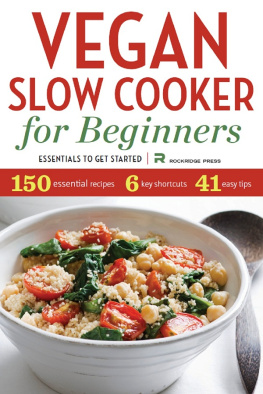
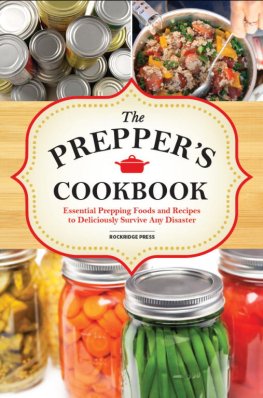
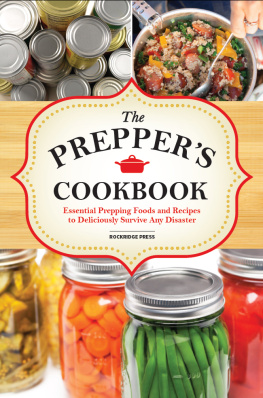

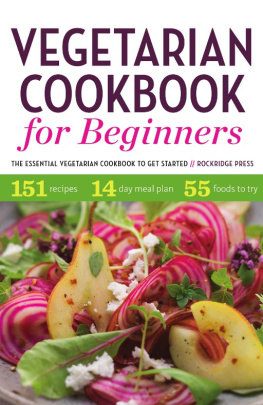
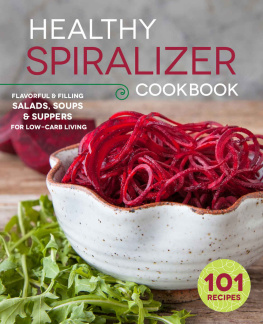

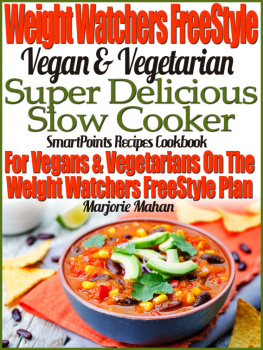

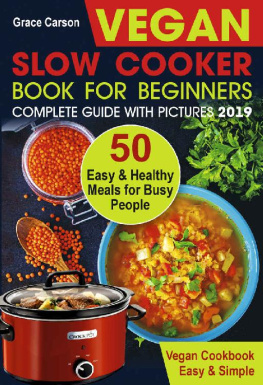

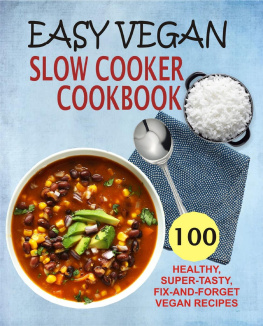
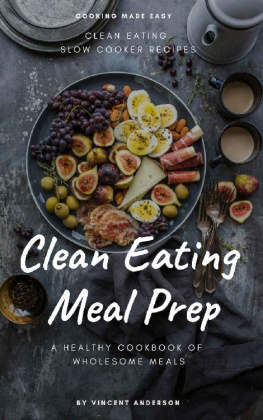
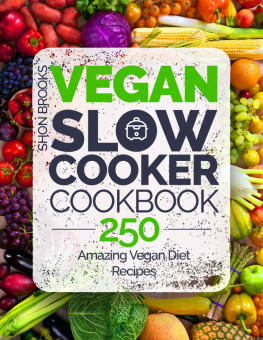
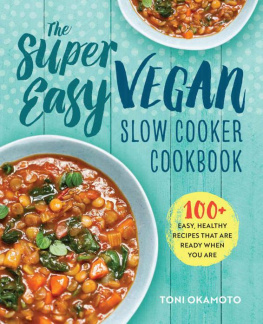
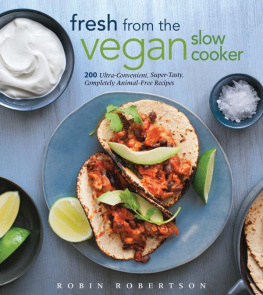

 CHAPTER ONE What You Need to Know to Get Cooking
CHAPTER ONE What You Need to Know to Get Cooking 
